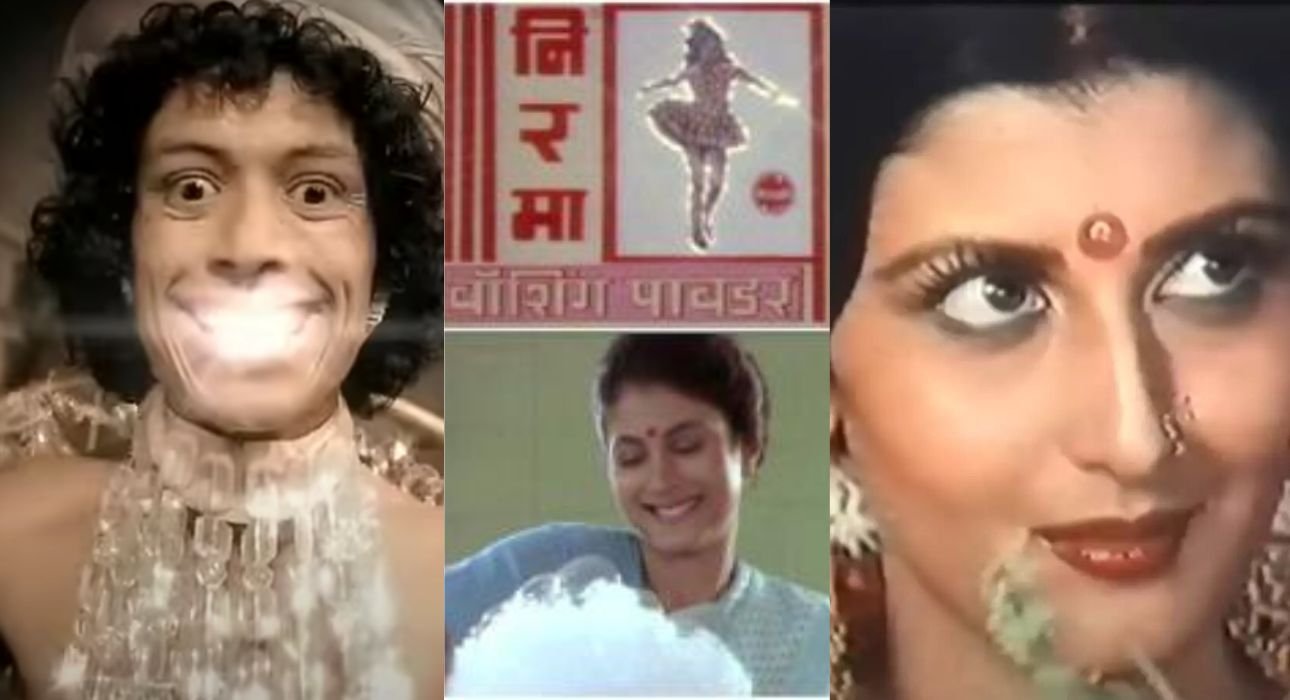“Amul, The Taste of India… Zaraa si Khushi, Pyaar zaraa sa”
“Nirma, Washing Powder Nirma Dhoodh si Safedi…”
“Vicco Tumeric, Nahi Cosmetic… Vicco Tumeric Ayurvedic Cream”
All the kids who grew up between the 1990s and early 2000s ages would undeniably know these ad jingles with melodies and rhythms as they go down memory lane. Social media platforms like Instagram reels and YouTube shorts have recently featured many retro visuals, familiar actors, and old-school music by bringing in nostalgic content. Have you ever wondered how these nostalgic ads have become so effective in today’s digital world? This article will dive into how brands create emotional connections with the viewers to enhance consumer recall, build brand loyalty, and drive sales by tapping into feelings of nostalgia.
What is Brand Marketing and What Are Its Recent Trends?
In this age of fast-paced technology and changing preferences, many popular brands have sought strategies to connect meaningfully with their viewers. One of the most booming strategies has been nostalgic advertising. Nostalgic ads have stirred warmth and emotions related to great memories that consumer behavior cannot just be attributed to the product’s appeal. Based on this aspect of psychology, businesses worldwide have effectively utilized this approach. Successful brand marketing in the past was more about building trust and long-term customer loyalty.
Brands would be more concerned with creating memorable jingles, eye-catching casts, and creative storylines for 30-second commercials that leave a lasting impact. The aim was precise: to connect the customer to the product, evoke positive emotions, and ensure they became repeat users over time. A catchy jingle or a charming ad is enough to transform a simple product into a beloved part of daily life. The magic was crafting an ad that resonated with the audience, leaving them humming the jingle or recalling the product’s benefits long after the commercial ended (Ayada, 2018).

Take, for instance, the classic ads of the ’80s and ’90s. Nirma, Cadbury, and Amul created jingles that most people in Indian society could relate to and thus etched in consumers’ minds. Such advertisements did not just sell a product; they sold a feeling- a moment of glee or a reminder of those more leisurely days. Consumers became loyal because their worlds had become part of those brands.
But the game has changed in today’s digital era. While jingles and catchy ads are still crucial, the rise of social media platforms like Instagram Reels and YouTube Shorts has introduced a new dynamic. Brands must capture attention in seconds, tapping into instantly recognizable and deeply personal emotions. Nostalgia has become a powerful tool in this new advertising landscape, allowing impactful ads to leverage the familiarity of the past to make consumers feel good about the present, helping establish a bond that encourages engagement and loyalty.
A hint of Nostalgia in Marketing Psychology and Consumer Behaviour
When consumers are exposed to nostalgic content, they experience a complex cocktail of emotions: happiness, warmth, and sentimentality. All these feelings are rooted in the brain’s reward system, leading to the release of the “feel-good” hormone, dopamine. Consequently, they not only remember a moment but also relive it. The associated positive emotions strengthen the bond to the brand.
Psychologists have also argued that nostalgia helps individuals deal with the present by providing a retreat to the past. That is particularly useful during periods of uncertainty about investing financially in these brands. This explains why nostalgia works so powerfully in marketing. Consumers are attracted to the past during social, political, or economic instability for comfort. Here, idealized nostalgic ads work in favor of brands as they capitalize on the audience’s emotional needs and create a bond with their audience (Youn & Jin, 2017).
Nostalgic marketing appeals not only to older generations who lived through those particular moments but also to younger audiences. That is where intergenerational marketing comes in. Younger consumers might not have experienced the original moments of nostalgic advertising. However, they still relate to the emotions such memories create and can gain from storytelling either passed on by their families or by the general cultural influence of older generations.
How do Memory and Emotions interact with Nostalgia?
Nostalgic ads evoke a strong emotional response in the consumer, mainly through the psychological concept of “episodic memory.” Episodic memories are specific, personal memories of events or experiences, often tied to feelings of warmth, happiness, or comfort. By activating these memories, nostalgic ads help brands transcend their product offerings and become a part of the consumer’s narrative.
When people see ads that remind them of significant moments, they often view the brand as an ally in preserving them. For instance, an ad that features a childhood song or a long-forgotten toy immediately brings back emotions tied to that particular memory. It’s a brand that comes with emotions and makes sense in the consumer’s emotional world; it somehow relates to the life journey of a consumer. The nostalgia effect further enhances recall; research also indicates that the probability of remembering an evocative memory is higher, and a brand associated with this memory is more likely to be considered. This partly explains why such nostalgic brands have relatively high brand recall, which brings about increased consumer loyalty.
Read More: Use of Psychology in Advertising and Marketing
How does it Positively impact Brand Promotion in India?
Nostalgia is an integral part of the advertisement in India, where Indian brands tap into the nation’s rich cultural heritage and collective memories. Indian advertising is unique, for there is a method of blending tradition and modernity through nostalgic references that appeal as much to the older generation as they do to the younger ones.
Iconic symbols, sounds, and personalities that have forever been a part of the national psyche have, from time immemorial, been cherished. Such brands as Cadbury and Amul successfully deploy nostalgia in commercials to evoke a memory that elicits an emotional response, usually by creating associations with products related to celebrations or family gatherings with festivals. Cadbury’s Dairy Milk must be the most iconic among all. Often, the brand takes the setting of childhood reminiscence, family ties, and festival occasions to claim part of India’s celebratory ethos.

Similarly, Amul, through its witty and topical advertisements, has created a connection with generations of Indians by associating itself with both nostalgia and humor. The Amul girl, the lovable mascot introduced in the 1960s, is still an icon of innocence and comfort for many. For example, Surf Excel attempts to connect with the nostalgia of family values and the essence of Indian festivals like Holi and Diwali. The advertising that creates an image of a family gathering, happy children playing around, and the warmth of family relationships helps create an emotional attachment to the product and reminds it of its place in the daily lives of Indian consumers.
A Brand Advertisement and Sales Increaser Strategy
Using nostalgia in advertisements is not just to elicit emotional responses; it is a deliberate strategy for increasing sales and market share. Tapping into the emotional reservoir of consumers, nostalgic ads build positive associations that drive purchasing behavior. When people feel good about a brand because it evokes warm memories, they are likelier to engage with it, share their experiences, and make repeat purchases. Nostalgia-driven advertisements increase word-of-mouth marketing. When consumers become emotionally attached to a brand, they will tell others about it, recommend it to their friends and acquaintances, and even defend it in online discussions. Organic marketing is invaluable today, where digital reviews and recommendations significantly influence purchases.
Nostalgia in brands, particularly for Indian brands, helps them establish cultural pride and belonging. Brands that include local customs, traditions, and values in their nostalgic campaigns will connect well with the Indian consumer, who identifies very much with their culture. The emotional connection formed through these ads often results in increased sales, especially during key cultural moments like festivals and weddings, where consumers are more likely to indulge in celebratory purchases.
Conclusion
More than just a marketing ploy, nostalgia ads have become a tool for building psychological connections between the brand and the audience. A brand can get a strong emotional response from consumers to drive consumer behavior, increase loyalty, and increase sales by recalling memories of yesteryear. In India, where consumer identity is a product of shared memories and cultural values, such advertising works the best.
With new innovative means of interacting with audiences coming in and being implemented, power from nostalgia remains central in any marketing strategy. This strategy creates a tremendous emotional effect on people, giving the brand lasting customer relations. It enables the transformation of a mere product into part of the narrative that has much significance on both personal and cultural levels, with which there can be a chance for an easy emotional return besides a monetary return.
References +
- Ayada, W. (2018). Using of nostalgia as a communication Strategy in TV advertising design campaigns to influence behaviour of brands consumers (An Analytical study on TV advertisement campaigns in Egypt). التصميم الدولية, 8(1), 335–351. https://doi.org/10.21608/idj.2018.86321
- Music-evoked nostalgia: Affect, memory, and personality. (n.d.). https://psycnet.apa.org/doiLanding?doi=10.1037%2Fa0019006
- De Veirman, M., Cauberghe, V., & Hudders, L. (2017). Marketing through Instagram influencers: the impact of number of followers and product divergence on brand attitude. International Journal of Advertising, 36(5), 798–828. https://doi.org/10.1080/02650487.2017.1348035
- Youn, S., & Jin, S. V. (2017). Reconnecting with the past in social media: The moderating role of social influence in nostalgia marketing on Pinterest. Journal of Consumer Behaviour, 16(6), 565–576. https://doi.org/10.1002/cb.1655













Leave feedback about this